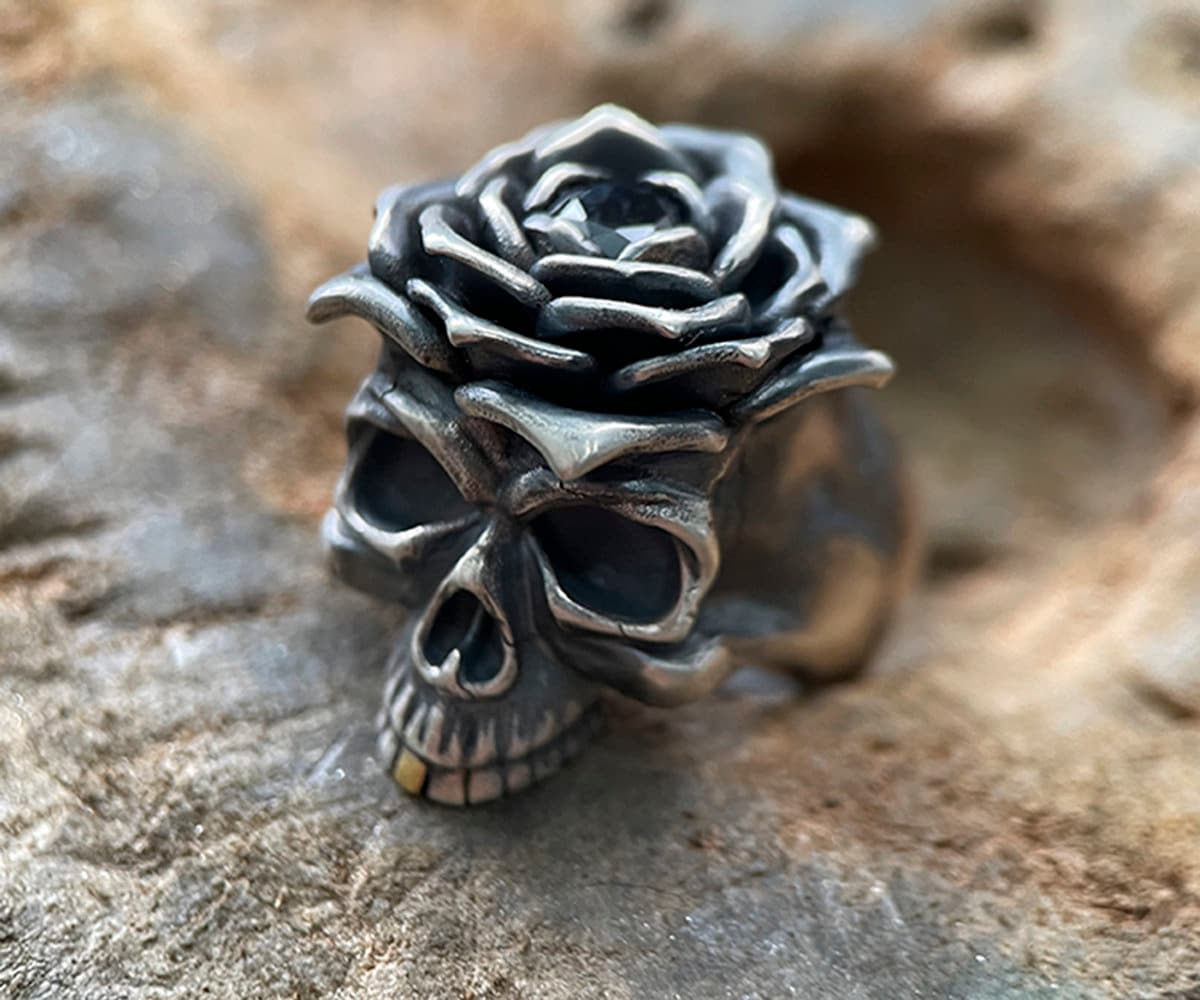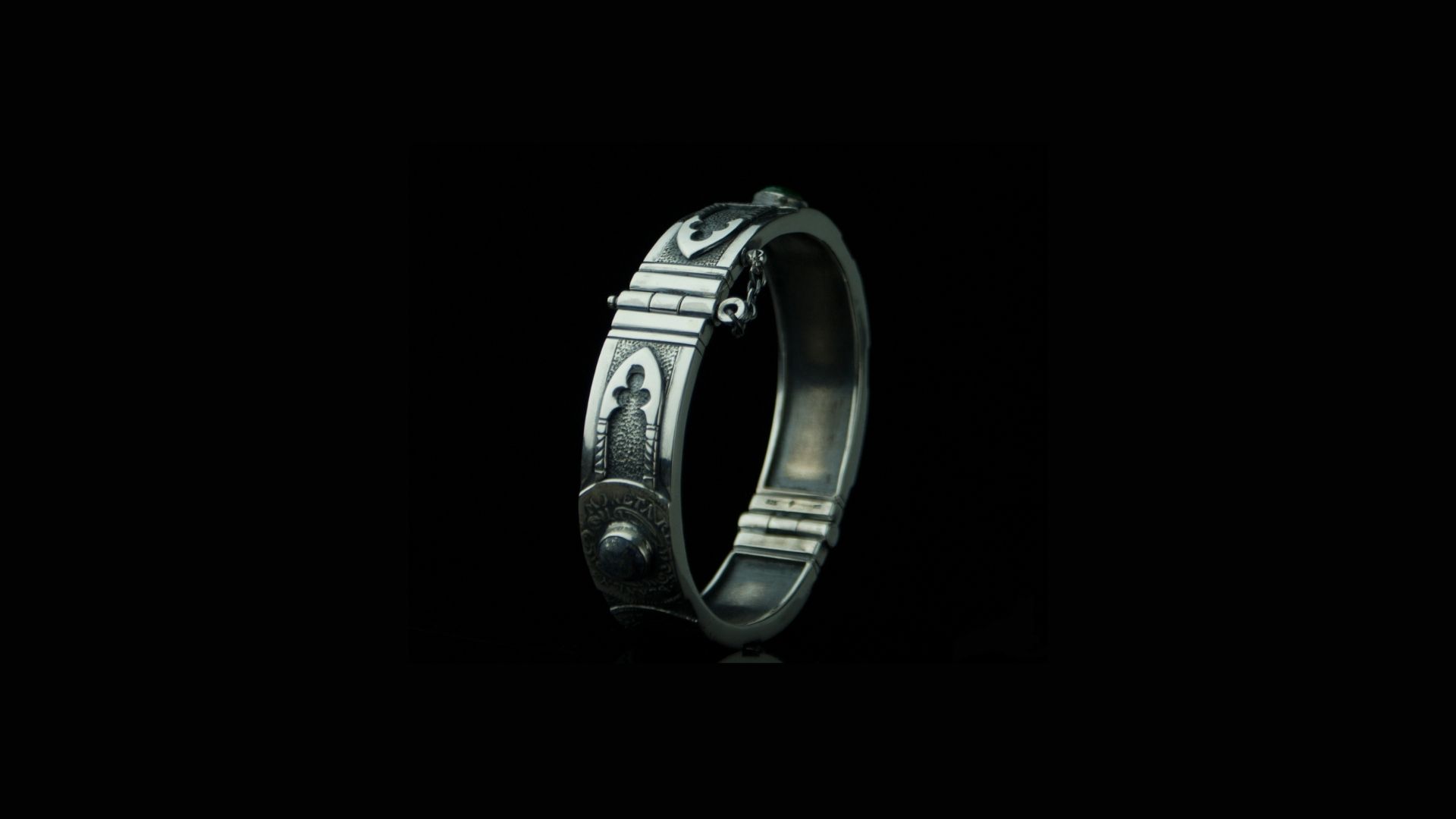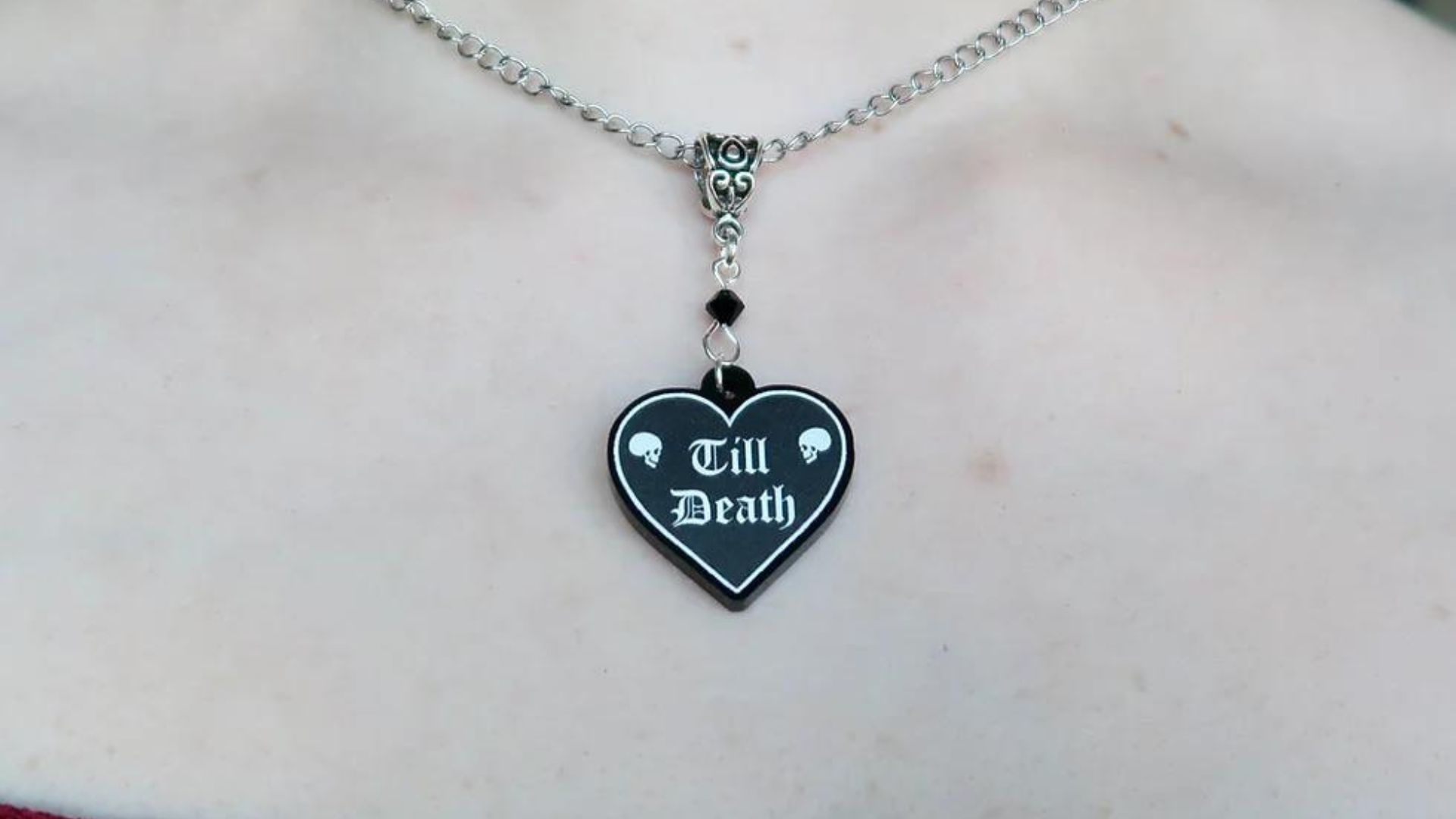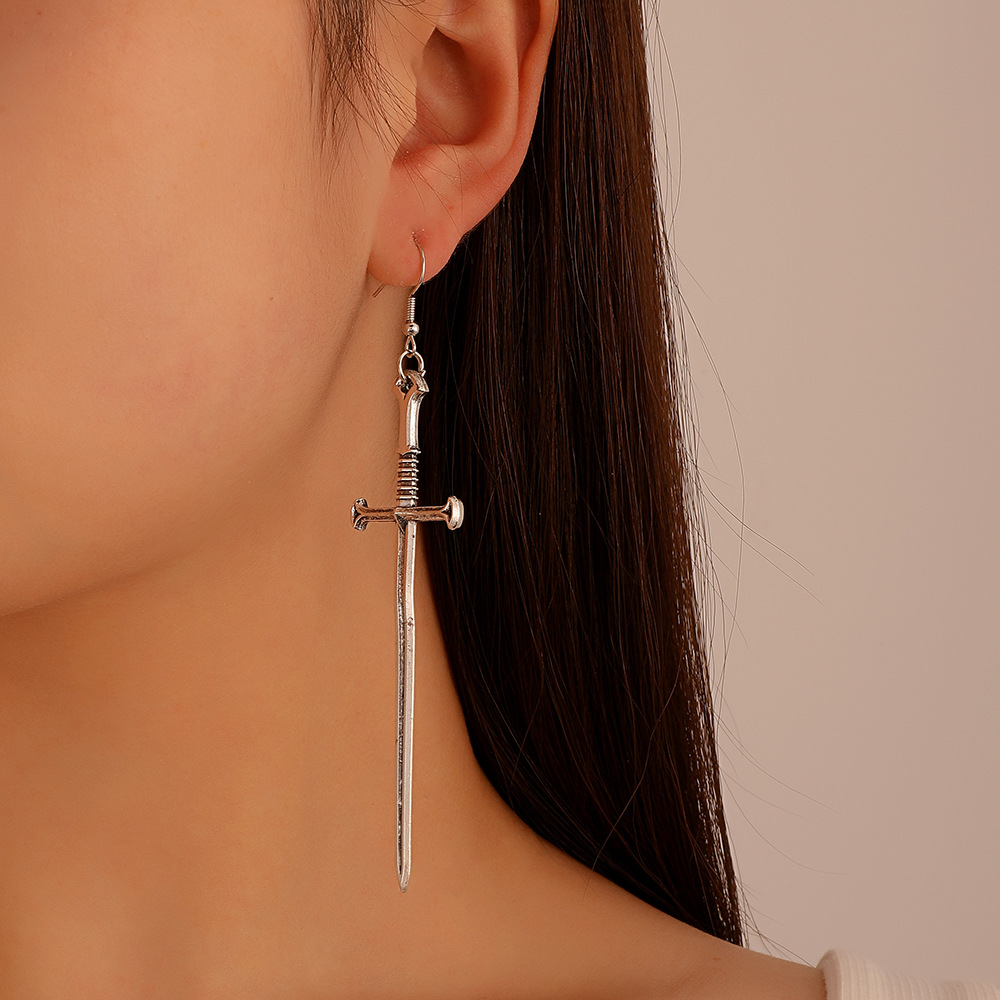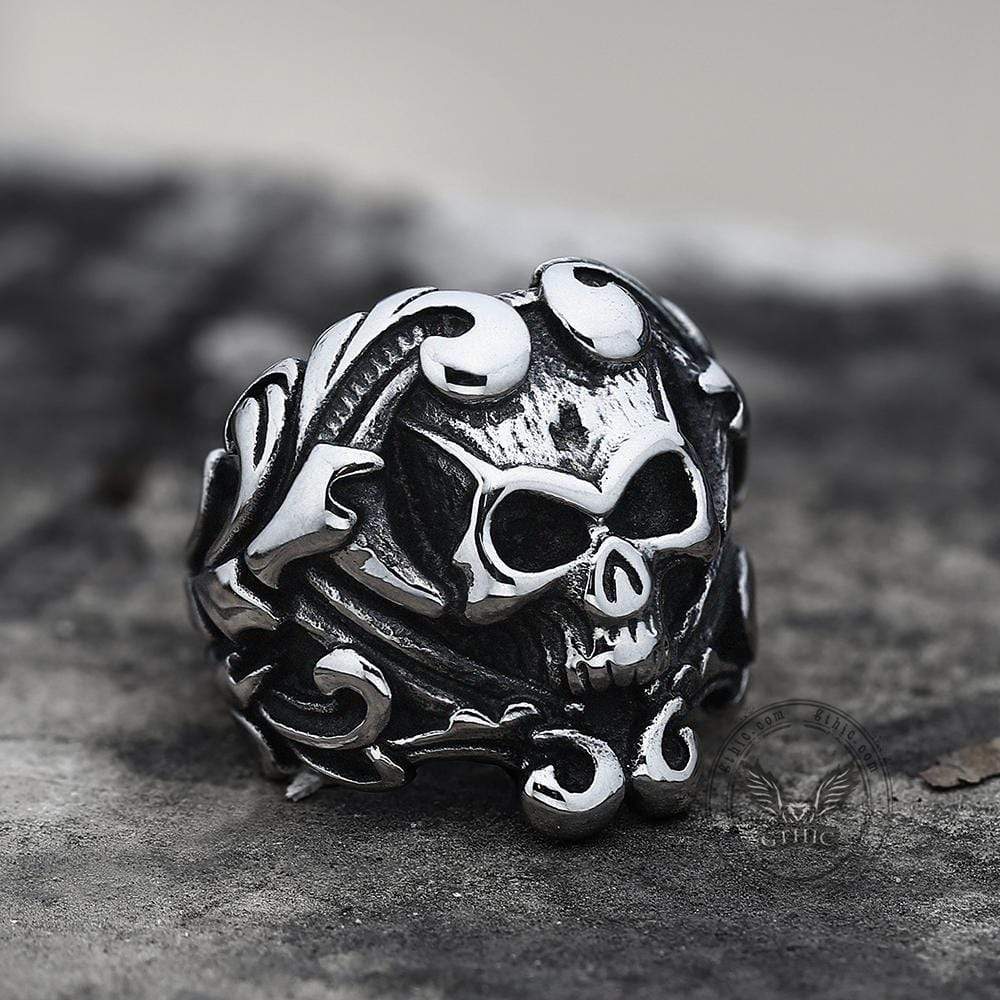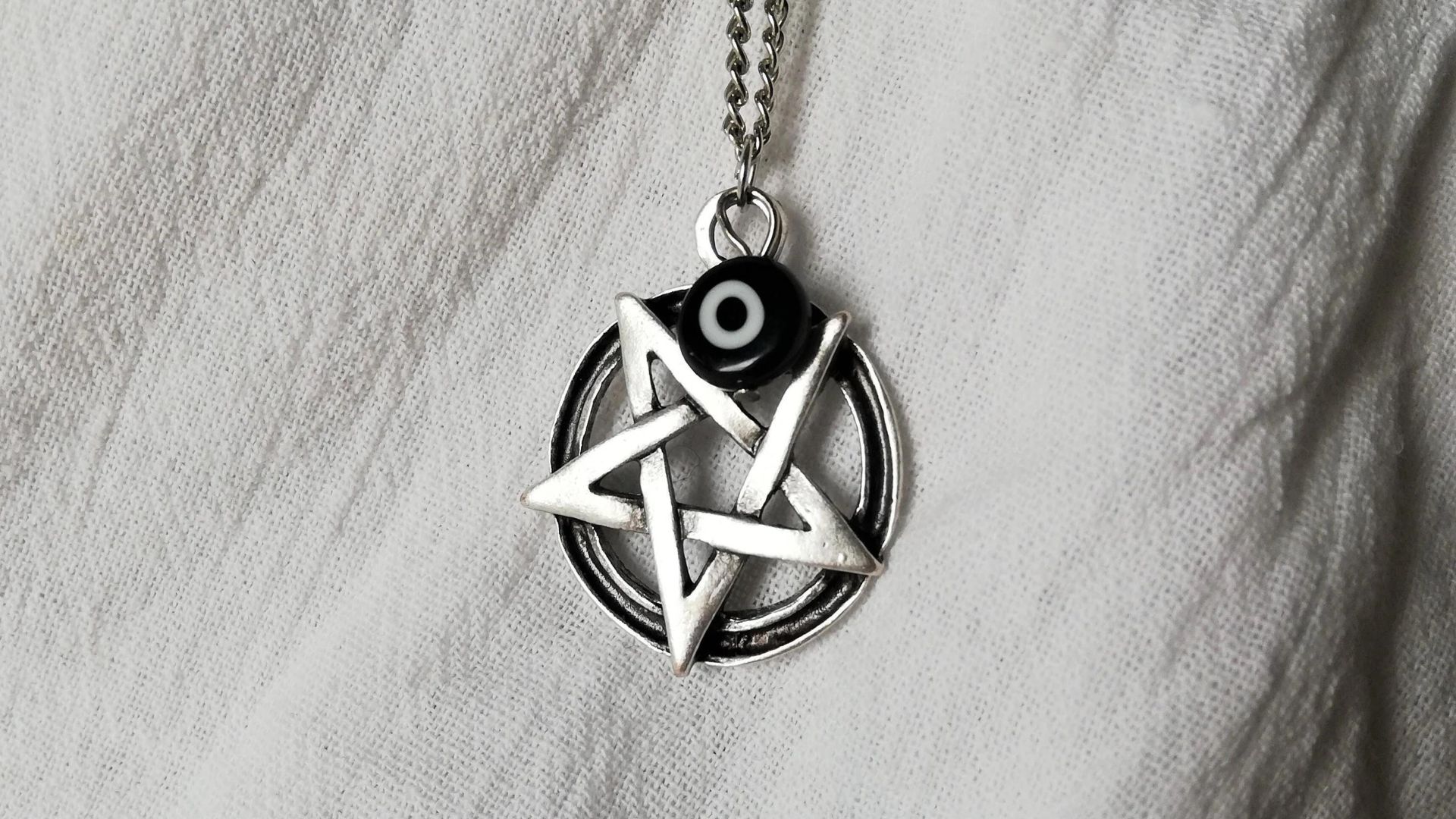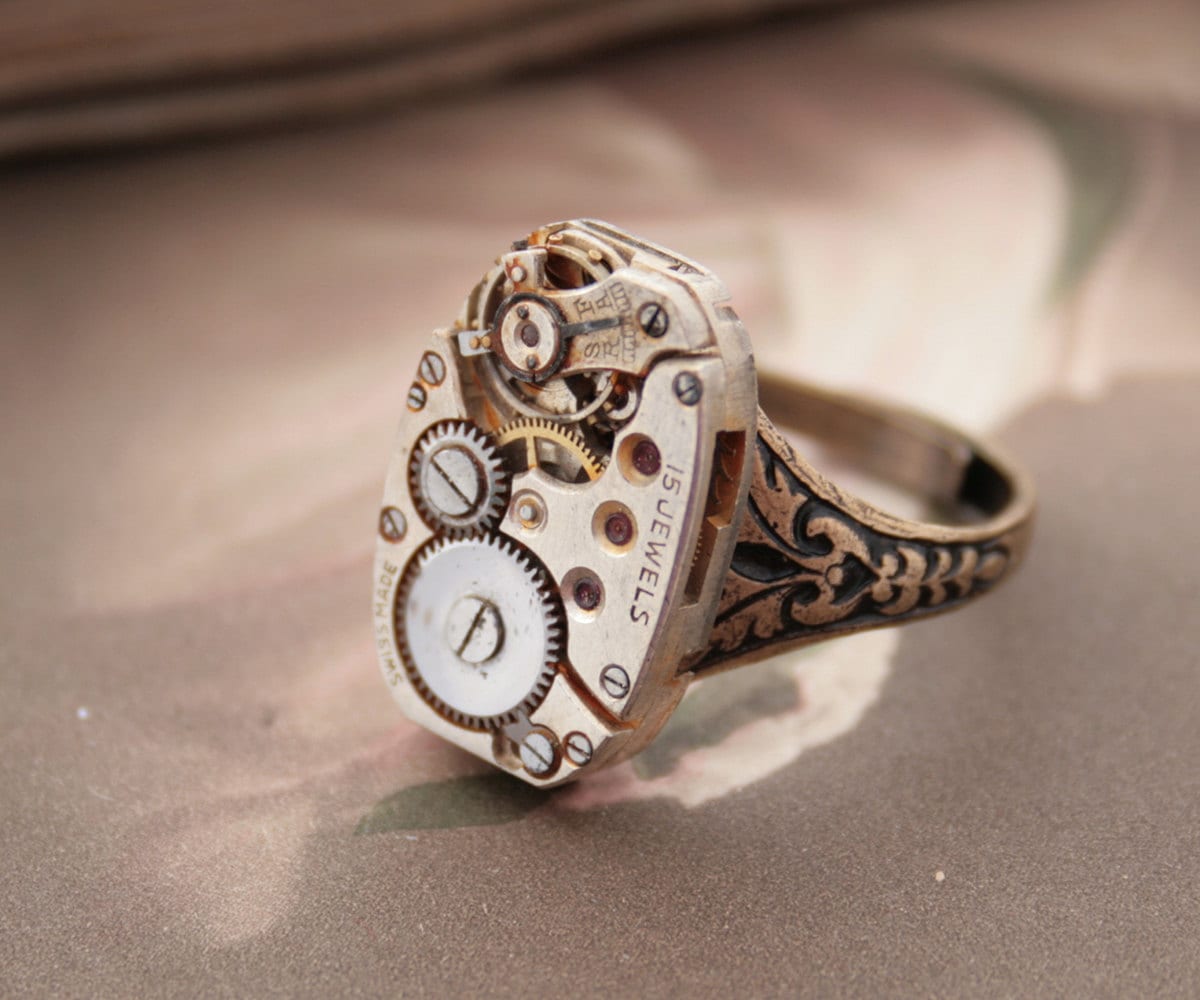
Intricately designed, meticulously crafted, and steeped in history, Gothic silver jewelryhas long captivated admirers of the dark and the mysterious.
A common misconception about Gothic is that it is gloomy, abominable, and gory. Additionally, many people picture pierced earrings, skulls, snake-head rings, pendants, and over-the-top collars that resemble hedgehogs' spines when they think of Gothic-style jewelry.
Designers may use a variety of forms with significant visual impact, such as skeletons, asymmetry, enigmatic totems, and other components, in Gothic-style design work.
Whether you believe it is dark, excessive, or not recognized by the public, the Gothic style with its whimsical vibe has steadily infiltrated all spheres of beauty.
This article delves into the fascinating world of Gothic silver jewelry, exploring its origins, symbolism, craftsmanship, and enduring appeal.
The Origins Of Gothic Silver Jewelry
Gothic silver jewelry didn't emerge in a vacuum; its development was shaped by a complex interplay of historical, social, and artistic factors.
Gothic jewelry and apparel have long been inspired by medieval Europe and its rich culture. Gothic jewelry embodies spirituality, mystery, and rebellion, from cathedral architecture to gloomy imagery. Let's trace Gothic jewelry's medieval beginnings and Victorian resurrection.
Exploring the rich symbolism, architectural inspirations, and counter-cultural elements that have made Gothic jewelry ageless and appealing. We also study its current comeback and unisex appeal, showing how Gothic jewelry redefines self-expression and challenges social standards.
This section delves into the evolutionary journey of Gothic silver jewelry, tracing its roots to the earlier medieval periods and uncovering the influences that paved the way for its distinctive style.
Early Gothic Influences
The roots of Gothic silver jewelry can be traced back to the Romanesque period, which preceded the Gothic era. During this time, jewelry was often characterized by simplicity and utilitarianism. However, as Gothic architecture began to flourish, it brought forth a new wave of artistic expression that spilled over into the world of jewelry.
Early Gothic influences can be seen in the use of arches, vaults, and buttresses in jewelry design, laying the groundwork for the intricate ornamentation that would become synonymous with Gothic jewelry.
The Rise Of Gothic Cathedrals
The construction of grand Gothic cathedrals in the 12th century marked a pivotal moment in the history of jewelry. These towering architectural marvels provided both inspiration and patronage for jewelers.
The soaring spires, ribbed vaults, and elaborate stained glass windows of cathedrals like Chartres and Reims had a profound impact on the design sensibilities of the time. Craftsmen sought to capture the essence of these architectural wonders in their jewelry, leading to the emergence of Gothic silver jewelry as a distinct art form.
The Influence Of Royalty And Nobility
Gothic silver jewelry was not solely a product of artistic inspiration; it was also shaped by the tastes and preferences of the nobility and royalty of the era. Kings and queens, dukes and duchesses, were avid patrons of jewelry craftsmanship.
They commissioned exquisite pieces to showcase their wealth and status. The demand for opulent jewelry with intricate Gothic motifs encouraged artisans to push the boundaries of their craft, resulting in the creation of breathtaking pieces that survive to this day.
International Trade Routes
The Middle Ages were a time of expanding trade routes and cultural exchange. The silk roads and maritime routes facilitated the movement of goods, including precious metals and gemstones, across continents.
This interconnectedness allowed jewelers to access a wide range of materials and design influences. Silver, in particular, was highly sought after for its malleability and durability, making it a favored medium for crafting intricate Gothic jewelry.
Symbolism Of Gothic Jewelry
The Gothic subculture has a diverse symbolism system. This system incorporates elements from Christian, Celtic, and Egyptian cultures as well as a few Satanic emblems. The following succinct explanation of Gothic symbols can assist in understanding this enigmatic subculture;
Mystical Gothic Symbols - Ankh
The Egyptian Ankh is most Gothic. We can only surmise how the Egyptian emblem of justice became the gothic "infinity and immortality" sign. One common theory attributes this change to vampire films, particularly The Hunger. This film popularized the Egyptian ankh as a vampire immortality symbol.
Ankh is an Egyptian cross. Like a looped cross. Its shape symbolizes the rising sun, contrasts, and masculine and feminine. Ankh represents Osiris and Isis' marriage, and earth-sky unity. This symbol appeared in hieroglyphs. It was in "welfare" and "happiness." Amulets' life-extending emblem. An Ankh-adorned amulet was also part of burial traditions. Life in the afterlife was certain. Ankh-shaped keys opened the Gate of Death.
Additionally, ancient Egyptians wore ankh charms to induce conception. Ankh was also a mystical emblem of knowledge. It appears in several Egyptian deities and clergyman depictions. Later, witches utilized ankh for fortune-telling and healing.
This sign was carved on canal walls because people thought it might prevent floods. Anchor pictures show another ankh-water relationship. The top circle and cross-like form of an anchor resemble an ankh.
Mystical Gothic Symbols - Crosses
Gothic is linked to religion and church, namely the "little man." The Lord is huge, but man is sand.
The Medieval Gothic suppressed people. That's why Gothic builders built massive temples and cathedrals. The power and weight of these massive structures stunned the assembly. Modern Gothic is a sad perspective on the Christian heritage of suppressing divine people.
Gothic jewelry uses Celtic crosses more than Latin, Greek, Maltese, or other crosses (learn more about crosses on this site). Its arms are equal in length and its center is round. It represents Celtic Christianity despite its pagan origins.
Celtic crosses are also termed sun crosses. It represents the sun, air, earth, and water together. Irish crosses arose in the VIII century. A common misconception is that St. Patrick, who turned Ireland to Christianity, popularized the Celtic cross. The Celtic cross combined a cross, the emblem of Christianity, with a circle, the symbol of the sun, to show converts the value of the cross by tying it to a pagan solar god.
Another interpretation calls the circle the "Sun of Faith," the eternal light of trust in God. According to the Holy Scripture, God is the sun, hence the circle also represents Him.
Neuron Cross has intriguing implications. Most people call it a peace sign. The inverted and shattered cross was its initial meaning. It denoted anti-Christian sentiment. Many individuals wear this sign without understanding its meaning.
Mastering The Art Of Gothic Silver Jewelry Craftsmanship
The creation of Gothic silver jewelry was not merely a task; it was a labor of love that required exceptional skill, patience, and an unwavering commitment to perfection. This section explores the intricate craftsmanship behind Gothic silver jewelry, shedding light on the techniques, tools, and creative processes that brought these exquisite pieces to life.
The Role Of Apprenticeships
One of the defining features of Gothic silver jewelry craftsmanship was the tradition of apprenticeships. Young and aspiring jewelers would enter into apprenticeship contracts with master craftsmen, learning the trade through hands-on experience.
These apprenticeships often spanned several years, during which time apprentices would gradually hone their skills in metalwork, engraving, gem setting, and filigree. The passing down of knowledge and techniques from one generation to the next ensured the preservation of the art and allowed for the evolution of Gothic jewelry craftsmanship.
The Intricacies Of Filigree Work
Filigree, a hallmark of Gothic jewelry, was a technique that required a level of precision and dexterity that was second to none. Artisans would meticulously shape fine wires of silver into delicate patterns and motifs, sometimes resembling lacework.
These filigree elements were then soldered together to create breathtakingly intricate pieces. The skill required to execute filigree work was often a closely guarded secret among master craftsmen, passed down selectively to their most trusted apprentices.
The Art Of Enameling
Enameling was another technique that played a significant role in Gothic silver jewelry craftsmanship. This process involved fusing colored glass powder onto the silver surface, creating vibrant and durable decorative elements. Enameling allowed jewelers to incorporate a wide range of colors into their designs, adding depth and contrast to their pieces. The careful control of temperature and precise application of enamel were essential skills for Gothic jewelry artisans.
Gemstone Setting And Its Challenges
Gothic silver jewelry often featured intricate gemstone settings that required exceptional skill and attention to detail. Setting gemstones securely in silver without compromising their integrity was a challenging task.
Jewelers had to carefully design settings that not only showcased the beauty of the gemstones but also protected them from damage. This meticulous approach to gemstone setting elevated Gothic jewelry to a level of craftsmanship that is still admired today.
Different Types Of Gothic Silver Jewelry
Gothic accessories like iron locks or nails, neckties or collars with nails, and velvet ropes around the neck primarily represent a rebellious attitude. Gothic jewelry also often features symbols like roses, skulls, crosses, devils, bats, and flowers.
When it comes to exaggerated forms and dark tones, most often with sharp angles, Gothic jewelry retains the continuous dark black hue of the Gothic style.
Gothic Heart Necklace
It may be unexpected to see hearts employed in a scene that specializes in misery and gloom. However, when you take into account its origins in gothic literature, which contains tales of tragic romance, it becomes simpler to grasp.
As a result, these jewelry items seldom feature a heart in a favorable manner. These designs would often also include other gothic iconography and symbols.
As a result, it was common to see pieces with the heart covered in a skull, encircled by thorns, or pierced by a sword.
Gothic Dagger Earrings
A dagger or a sword design is another common Gothic jewelry motif. It is a fitting illustration of the common gothic theme of love and suffering, which is often sprinkled across tales in popular gothic literature.
Some designs imitate the current shape of a dagger by applying it to earrings, creating the illusion that the blade has penetrated the wearer's flesh. Others employ medieval designs to create bracelets or pendants for other jewelry items.
Gothic Skull Ring
Because it is often used as a representation of death and the hereafter, the skull is ominous and sinister. Although this fits the gothic aesthetic, the skull also has additional connotations.
For instance, since it shelters the brain and shields it from harm, medieval thinkers also saw it as a symbol of human intelligence. The skull acts as a reminder of mortality for the contemporary goth. People should respect life and treat each day as if it were their last since death is inevitable.
Black Pentagram Necklace
The pentagram, also known as the pentacle, is shown as a five-pointed star encircled by a circle. The five elements of earth, fire, air, water, and spirit are symbolized by these five angles.
The picture is often linked to Satan when shown upside down. The original pentagram symbol, however, comes from paganism and stands for both knowledge and magic. It served as a sign of protection to the Pagans.
Cleaning Of Gothic Silver Jewelry
Gothic silver jewelry, with its intricate designs and dark allure, deserves proper care and attention to ensure it retains its beauty over time. This section delves into the importance of cleaning and maintaining your Gothic silver jewelry, providing tips and insights to help you preserve these cherished pieces.
Understanding The Tarnish Dilemma
Silver, when exposed to air and moisture, naturally tarnishes over time. Tarnish manifests as a dull, darkened layer on the surface of the silver, which can obscure the jewelry's intricate details.
This tarnish is a chemical reaction between the silver and sulfur-containing compounds in the environment. Understanding this process is the first step in effectively cleaning and maintaining your Gothic silver jewelry.
Cleaning Methods For Gothic Silver
Cleaning Gothic silver jewelry requires care and precision to avoid damaging the delicate metalwork. Several methods can be employed.
- Polishing Cloths- The simplest and safest method for cleaning Gothic silver jewelry is to use a soft, lint-free polishing cloth. Gently rub the cloth over the jewelry to remove the tarnish and restore its shine. This method is ideal for routine maintenance and light tarnishing.
- Mild Soap and Water- For slightly more stubborn tarnishes, a solution of mild dish soap and warm water can be used. Create a soapy mixture and gently scrub the jewelry with a soft toothbrush or a dedicated jewelry cleaning brush. Rinse thoroughly with water and pat dry with a clean, soft cloth.
- Silver Dip or Polish- Commercial silver dips and polishes are available for more severe tarnish. However, use these products sparingly and strictly follow the manufacturer's instructions, as they can be abrasive and potentially harm the jewelry if used excessively.
Avoiding Abrasive Cleaners
Gothic silver jewelry is often characterized by intricate details and delicate designs. It's crucial to avoid abrasive cleaners or harsh methods, such as using toothpaste or baking soda, as they can scratch the surface and harm the jewelry's patina. Additionally, avoid using ultrasonic cleaners, as the vibrations can potentially loosen gemstones or damage fragile settings.
Storing Your Gothic Silver Jewelry
Proper storage plays a significant role in preserving the beauty of your Gothic silver jewelry. To prevent tarnish and scratches, consider the following storage tips.
- Individual Pouches or Boxes - Store each piece of jewelry separately in soft, non-abrasive pouches or jewelry boxes. This prevents pieces from coming into contact with each other and minimizes the risk of scratches.
- Anti-Tarnish Strips- Placing anti-tarnish strips or tabs in your jewelry storage containers can help absorb moisture and prevent tarnish from developing. These are readily available and can extend the intervals between cleanings.
- Avoiding Humid Environments- Store your Gothic silver jewelry in a cool, dry place away from direct sunlight and humidity. High humidity can accelerate tarnishing, so consider using airtight containers or anti-tarnish bags.
FAQs
Why Do Goths Wear Silver?
Since silver is the moon metal, it best captures the aesthetics of this subculture. Since gold and other yellow metals are linked to the sun and daylight, they are unacceptable to goths.
What Are Some Lesser-known Symbolic Motifs Found In Gothic Silver Jewelry?
Gothic silver jewelry often features motifs like griffins, gargoyles, and mythical creatures that symbolize protection and the supernatural.
How Did The Availability Of Gemstones Influence The Design Of Gothic Silver Jewelry?
The availability of gemstones allowed for the incorporation of vibrant colors into Gothic jewelry, enhancing its visual appeal and symbolism.
What Role Did Guilds Play In The Production Of Gothic Silver Jewelry?
Guilds played a significant role in regulating the quality and craftsmanship of Gothic silver jewelry, ensuring that pieces met high standards.
Why Is It Important To Avoid Wearing Gothic Silver Jewelry During Certain Activities?
Wearing Gothic silver jewelry during activities involving chemicals, harsh cleaning agents, or physical strain can lead to damage or tarnishing.
Conclusion
The world of Gothic silver jewelry is a captivating realm where symbolism, craftsmanship, and elegance converge. From its intricate designs and diverse forms to the essential care and maintenance required to preserve its beauty, Gothic silver jewelry continues to enchant and mystify admirers, both old and new.
Its enduring allure, steeped in history and symbolism, ensures that Gothic silver jewelry remains a cherished and timeless art form for those who appreciate its dark and mysterious charm.
